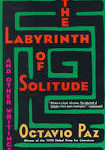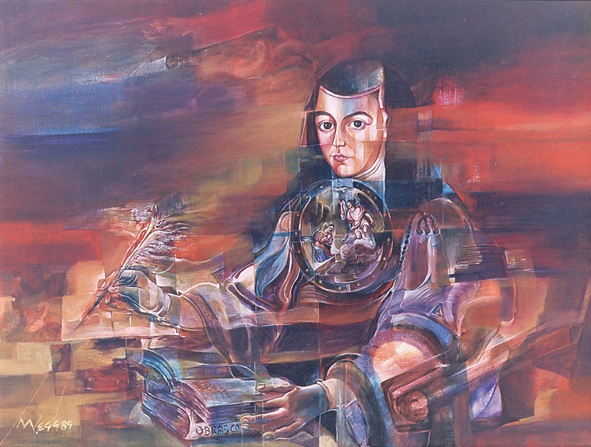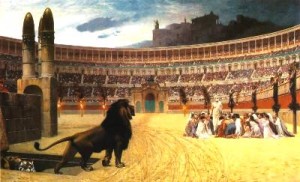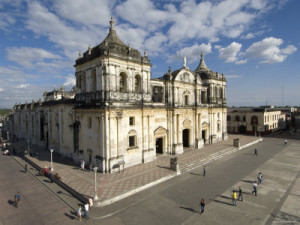
I remember when I attended a Día de los Muertos celebration for the first time—it was for a college class field trip; we went to Self Help Graphics, a Mexican-American/Latino community arts center and gallery in Los Angeles. There were calaveras everywhere: painted on people’s faces, on clothing, carved into jewelry, on vendors’ art pieces, and seen within the altars and galleries inside the community center. The remembrance of our loved ones whom we had lost and the sense of cultural pride filled the event, and my heart. The November 2nd celebration falls on the same day as my late grandmother’s birthday and being in East Los Angeles, where my grandparents briefly lived upon their arrival to the United States, made for a memorable night. I was able to celebrate and reflect on my grandmother’s life and Mexican heritage in the same proximity where my family’s American beginnings started. It was definitely a moving, full-circle moment.
It is this same circular movement and cycle, or as scholars Lara Medina and Gilbert R. Cadena state, “the interconnectedness of life,” that is emphasized in indigenous beliefs and within the Día de los Muertos holiday, itself (75). We live, die, and our spirits return to dwell among our loved ones we leave behind and partake of food, drink, music, and fragrant flowers that we enjoyed before passing on. The living family members hope that their late relatives and ancestors will return and hear the words that are being expressed and witness the celebrations in their honor.
Día de los Muertos, or Day of the Dead, is a Mexican holiday and some of its celebrations can be traced back to between 2,500-3,000 years ago. The fiesta that became the modern day Día de los Muertos fell in the ninth and tenth months of the Aztec calendar, where celebrations were devoted to the goddess, Mictecacihuatl, known as “Lady of the Dead” and separate feasts were dedicated to children and adults who had passed on. Sixteenth-century Spanish Catholics shared similar rituals honoring the dead, as the Mexican indigenous—graveside meal and flower offerings, and masses for the dead were common. What we see today is a combination of the two cultures and spiritual beliefs. It is currently observed in connection with the Christian holidays All Hallows’ Eve, All Saints’ Day, and All Souls’ Day, falling on October 31st-November 2nd.
Altars, or ofrendas are built privately (or as it has grown in the U.S., there are public altars at community celebrations) with pictures and other memorabilia of their loved ones, vibrant orange marigolds, candles, and possessions of their loved one. In Mexico, families go to cemeteries to clean and decorate gravesites, feast, play music, and leave offerings. Celebrations can vary depending on the region or village. Some traditional foods that are consumed during Día de los Muertos are tamales, pan de muerte, atole, and champurrado. At gatherings and events in the United States, one can see energetic , yet sacred Aztec dances, observe and purchase amazing art, calevera masks, decorative sugar skulls;all while listening to various genres of music, while walking under brightly designed papel picado.
While this holiday is celebrated and honored in Mexico and within Mexican-American communities, other Latin American countries also observe their own rendition of the holiday such as Guatemala, Ecuador, and Brazil. According to Medina and Cadena, “The Latino culture is not afraid of death…when you age you don’t have to be ashamed” (87). While this holiday is associated with Latinos, other parts of the world also have their own take on celebrations honoring the dead.
In the U.S., different events have different flavors; one can view social-political themes of justice at some events, while American pop culture is also being weaved in, such as at the famed Hollywood Forever Cemetery. Self Help Graphics is credited for developing the love of Día de los Muertos in Los Angeles, then California, and eventually spreading throughout the United States. Today calaveras have become a popular icon and style in regards to clothing, accessories, and tattoos, even for non-Mexicans/Latinos. California cities such as Los Angeles, San Diego, and San Francisco all have large celebrations as well as other areas with a large Mexican/Mexican-American population throughout the Southwest, Chicago, Colorado, and so on. The awareness of Día de los Muertos has really grown over the past years and its celebrations have become more accessible. I am so grateful that I became exposed to this holiday and I now celebrate annually. Medina and Cadena write of a celebration participant, “Without that sense of who we are, and who our ancestors are, we become a lost culture. Many segments of our society are lost because they don’t know their ancestry and they don’t understand death” (87). I feel it is important to honor our loved ones who have passed, for they will be returning to partake of your offerings. Death is part of the cycle of life and the more it is honored and celebrated, we can better understand the importance of the cycle.
Works Cited:
Medina, Lara and Gilbert R. Cadena. “Días de los Muertos: Public Ritual, Community Renewal, and Popular Religion in Los Angeles.” Horizons of the Sacred: Mexican Traditions in U.S. Catholicism. Ed. Timothy Matovina and Gary Riebe-Estrella, SVD. Ithaca and London: Cornell University Press, 1999. 70-93. Print.
Photo Collage: Taken by self at Self-Help Graphics Día de los Muertos celebration 11/2/2013.









